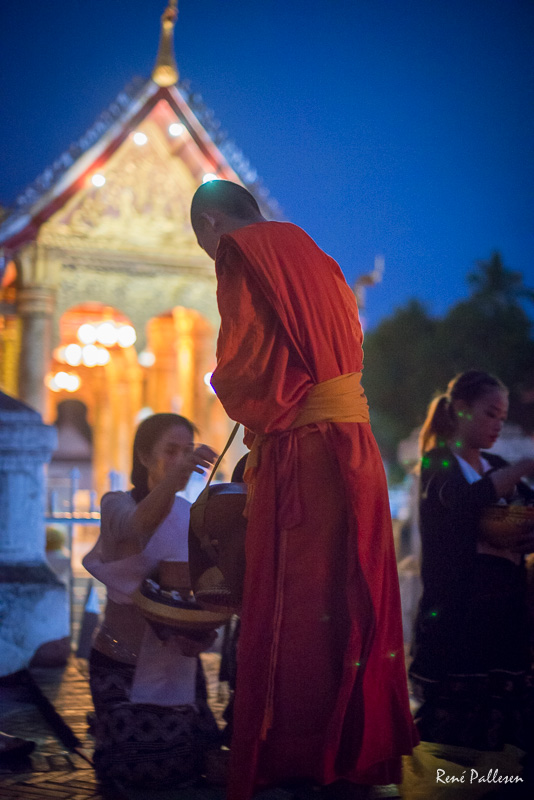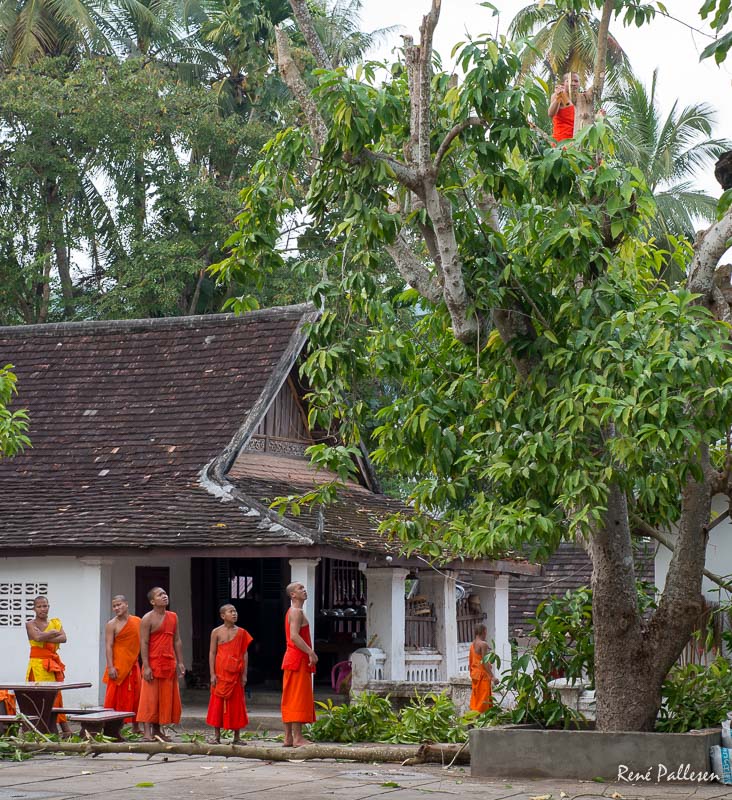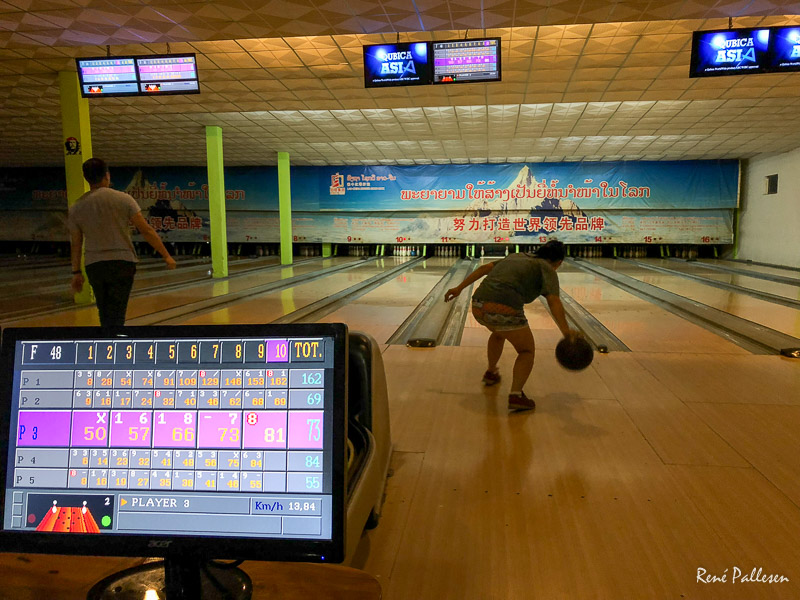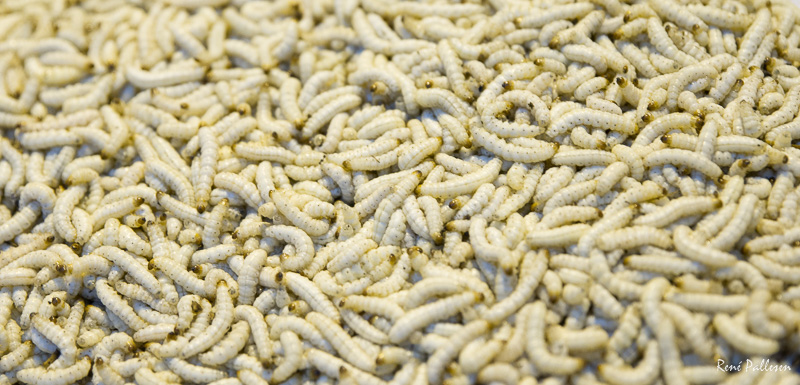11. March 2018 22:03
by Rene Pallesen
0 Comments
Religion is an integral part of Laos society where the majority are Budhists.

The monks dressed in orange and red ropes are still visible everywhere and it is largely seen as becoming a novice (junior monk) is seen as an opportunity to get an education and support your family if you come from a poor rural area.


The high influx of tourists, especially to Luang Prabang is therefore a bit of a win-win situation for everyone. The tourists support the temples in the area by paying their admission fees to visit and on both my trips I have found that the monks are keen to have a conversation as it is a way of practicing their language skills.
In Luang Prabang the monks walk in procession every morning to collect rice from worshipper along the roads. Before sunrise there are hundreds of monks walking the streets in every direction. There is an equal horde of tourists trying to take photos of these monks and equally tourists handing out (sometimes dubious) rice to them.

There are posters around the city encouraging being there and seeing the monks as well as providing some guidelines such as keeping a certain distance, not using flash photography and if you hand out rice then where to get it from. Most of it common sense really, so it was sad to see how some would be blocking the paths and sticking their camera phones with flashes into the monks faces.


Sacha and I went there a couple of mornings, but because of the time of the year everything was dark and because the monks move quite fast through the streets it was a challenge getting good shots.

One afternoon we walked past a temple and a group of monks were in progress of cutting down a large tree and afterwards trimming off the branches. They were going to use some of the tree trunk for traditional drums and the rest for ornamental purposes inside the temple.



In the late afternoons you would hear them chanting in the small rooms of meditations, chanting and prayer. These are often smaller places of worship and not part of the main temples which are used for more ceremonial purposes.
One evening I heard such chanting and went to investigate and found these monks. Definitely one of my favourite moments in Luang Prabang.

A common assumption and misconception is that the monks live by an ancient code with a simple life, so it is quite interesting to see that even they have adopted modern technology with smart phones and cameras.

11. February 2018 22:03
by Rene Pallesen
0 Comments
The locals are still relying on motorbikes to get around. They are far cheaper and more convenient in the towns. It is even possible to fit an entire family onto a single motorbike.



Younger kids and high schoolers ride their push bikes for transport.

Although Aiden and the other kids definitely preferred the motor bikes.

Nothing too flash for weddings - a normal new car will suffice. If you notice the sign on the door, then I am not sure if the bride was expecting to come home to 'Meat & Sausage'.

There are also some vintage cars around which have survived since colonial times - like this 1952 Citroen.

10. February 2018 07:03
by Rene Pallesen
0 Comments
On the last day in Luang Prabang we went to the local ten pin bowling alley.
We had heard and read that this is the place where things are happening in Laos. When we got there the place was totally deserted apart from a few staff members.
We did play bowling and it is a bit surreal to play by ourselves in this fairly modern centre in Laos.

They didn't have any support rails for the kids, but Aiden especially did really well and the kids managed to beat Kim on points.


9. February 2018 07:03
by Rene Pallesen
0 Comments
8. February 2018 22:03
by Rene Pallesen
0 Comments
8. February 2018 22:03
by Rene Pallesen
0 Comments
7. February 2018 21:03
by Rene Pallesen
0 Comments
For getting around the towns in Laos we mainly used Tuk-Tuks. These are small motorbike powered minibuses and the experience can be very mixed. Most of them are generally good, but some have bad brakes have a plume of smelly two stroke engine smoke trailing behind them. We could easily fit our two families into one and I'd joke that there would even be room for another couple of adults.

The kids loved the tuk-tuks and have the fresh air blowing in their hair while riding.

The only downside is that you'd never quite know what the fare would be until you started bargaining and from town to town the fares seemed to be very different. Even though I believe I am reasonable proficient at bargaining, I'm still confident that we paid more that the locals would be paying for the same trips.





For the longer trips we would catch either local buses (mini vans) or in some instances it was worthwhile us hiring a private bus as we were enough people to fill it.
From Vang Vieng to Luang Prabang we hired a private van taking us across the mountain pass at Kasi. Last time I went through here it was in an open bus and at the pass it was raining and really cold. This time round we had a beautiful clear day with a great view of the valley below from the top.

The week before they had a lot of rain and a landslide had taken out large parts of the last section of road (I read in the local newspaper a few days earlier that the road was closed). Our little van was struggling getting enough grip and our driver had to reverse to get enough of a run-up in the next attempt to make it through the steep and muddy section.
The larger trucks were really struggling getting through.


6. February 2018 16:03
by Rene Pallesen
0 Comments
The morning markets are interesting. This is where the locals still go to buy their fresh produce and all kinds of specialties are being sold here. It would be easy to go here and get the ingredients for some really delicious food.
There are also some unusual things that we don't see in our western kitchens. such as:
Dried Squids:

Fresh fish - of cause, but this have sharp teeth.

A protein and herb table that would make most chefs (and diners) salivate:



The Chillies in Lao are more hot than in Thailand - We loved the heat.

A pig:

River crabs:

Beetles:

Dried rats:


Caterpillar - these are yummi when fried:

Frogs:

River snails:

Dried squid, shrimps and fish:



5. February 2018 16:03
by Rene Pallesen
0 Comments
5. February 2018 16:03
by Rene Pallesen
0 Comments